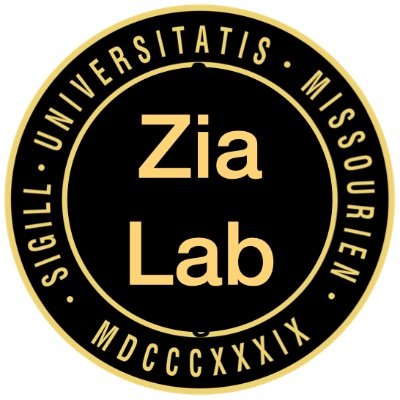
The Zia Lab
@TheZiaLab
Followers
363
Following
48
Media
28
Statuses
36
The Zia Lab builds whole-cell models of biological cells, large-scale computational models of gels and other soft matter, via integrated multi-scale modeling.
University of Missouri
Joined May 2022
Giving a talk at UT Austin @TexasCDCM on whole-cell models for engineering protein materials. Using physics-based AI to simulate millions of biomolecules at near-atomistic resolution ribogenesis in synthetic cells. ZiaLab members Vishal Sivasankar, Harnoor Sachar and Galen Wang.
0
0
1
Hiring postdocs! Join the Zia Lab to build near-atomistic, physics-informed whole-cell models and uncover how ribosomes self-assemble and design mutations to engineer ribosomes. PhD by June '26; Python/C/C++/MD; HPC/GPU; some ML/AI. rzia@missouri.edu
0
1
4
Heading to #AIChE2025? Come see atomistic whole-cell modeling reveal physics of 🧬 life! - How E. coli speeds protein synthesis for fast growth - Neural nets power near-atomistic ribogenesis 📍 Acrivos session 11/4@2:36PM Hynes 302 📍 Bio Flows session 11/4@5:45PM Hynes 301
0
0
3
Honored to be named a Science Scout for the @Hypothesisfund . Excited to help further HF’s mission to advance scientific knowledge by identifying and seeding especially innovative, early-stage research. Thrilled to join a great network of Scouts: https://t.co/LlpbfqZ1dz
0
2
8
Excited to show our new whole-cell models of bacteria representing interactions between millions of biomolecules & DNA at Society of Rheology Annual Mtg. I’ll explain how E.coli uses colloid physics to speed protein synthesis for faster growth. Mon 10/20@10:30AM Sweeney Blrm C.
0
0
0
Delighted to give a keynote at Central SynBio Workshop today at U Minnesota, highlighting our AI-guided physics-based whole-cell computational models of ribosome biogenesis. Amazing synbio science from many great scientists. Shout out to the organizers! https://t.co/LFhDYfOd6m
0
0
2
Honored to be elected a Fellow of the American Physical Society! Deep gratitude to my nominators and the amazing lab members and collaborators who made possible our discoveries in soft matter and the physics of life. Grateful to be part of such a vibrant community @APSphysics!
1
0
8
Excited to share new research helping explain why synthetic minimal cell JCVI Syn3A's nucleoid is cell spanning. Great work by Zia Lab members Gesse Roure and Vishal Sivasankar! Check it out at the 5th Minimal Cell Workshop on October 3 at 8 am ET.( https://t.co/A0TyGt7OLA).
0
2
5
Excited to present our work on whole-cell modeling of E. coli and ribogenesis in at the @AmerChemSociety Fall 2025 Meeting! Great work from ZiaLab members Vishal Sivasankar, Jen Hofmann and Theo Yang. Come check it out at the Westin Potomac Salon 3, Monday 08/18 at 8:00AM!
0
2
8
Excited to share new work now out in @NatureComms Biology! We use computational modeling to show how E. coli preloads its ribosomes to speed codon recognition testing & protein synthesis for faster growth. Check out the paper (open access) at https://t.co/93jYa0pEkV.
0
3
12
Excited to present NEW WORK at APS! The ZiaLab is headed to the 2025 @APSphysics Global Summit! Catch Vishal Sivasankar as he presents our latest work on whole-cell modeling of Escherichia coli. Don’t miss it! #APSMarch #APSSummit25
0
3
7
Paper now out in PNAS! Our colloidal whole-cell simulations + in vivo 3D particle tracking reveal how macromolecular interactions and confinement determine dynamics/localization in E. coli. Congrats @AlpSunol & @dsvalverdem! https://t.co/jk1UzowgwT
0
7
24
Excited to share our accepted Annual Reviews article, "The matter/life nexus in biological cells". We cast a wide net into cellular biology, biophysics, and genetic approaches to defining life, toward understanding of the materiality of cellular life: https://t.co/6TGeIW0qRw.
0
8
24
Check out our expanded model for Confined Stokesian dynamics with novel functions for rheology, just published in @JFluidMech. Check out the paper at https://t.co/eQEg6rgwXH
0
3
22
𝗣𝗵𝘆𝘀𝗶𝗰𝘀 𝗼𝗳 𝗹𝗶𝗳𝗲: We are excited to share our new preprint on 3D diffusion in live E. coli where we show how colloidal physics regulate life-essential processes in biological cells. Check out the paper and video at https://t.co/qDL4cYkXeD.
1
14
79
Come see our talk at ICR on Friday at 11:50 with exciting results about two step yield in colloidal gels!
0
1
5
We show that all gels incorporate three mechanisms of gel solidification: percolation, phase separation, and glassy arrest. Extracting the minimal thermodynamic conditions of forming gels from experiments or simulations, we construct a phase diagram for gel morphologies.
0
0
2
Exciting news! Brian's work to elucidate "Minimal conditions for solidification and thermal processing of colloidal gels" is published in PNAS! It is a fantastic collaboration with @theHelgesonLab Check the paper out here:
1
2
17
11:30 AM at APS, join us for an exciting session: “New physics based perspectives in building and understanding biological cells” Access ROOM 238 via ROOM 205! invited speakers are Roseanna Zia, @KateAdamala , John Glass, Roseanna Zia , Antonio Calavera, Sumitaba Brahmachari
0
1
6
